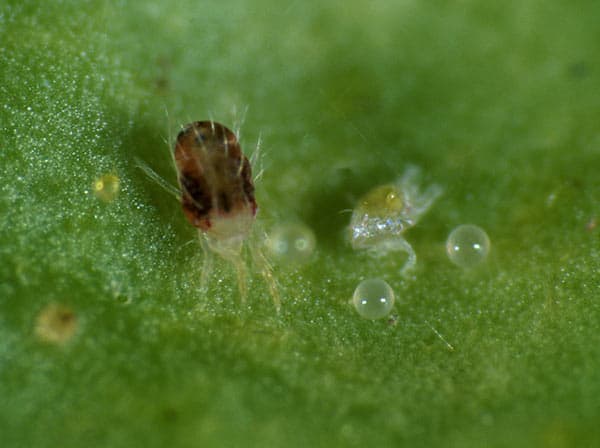Red spider mites (RSM, Tetrachys urticae) also known as Two-Spotted mites, are tiny arachnids establish on crop plants, causing characteristic damage to leaves. Adults and juveniles feed on the underside of leaves, sucking out the cell contents resulting in chlorotic spots on the upper leaf surface. The mites measuring about 0.5mm long with an oval-shaped body that varies in colour from greenish-yellow, to virtually transparent, brown, and red-orange with two dark spots visible on either side of the abdomen. The life cycle involves five developmental stages: egg, larva, two nymphal stages, and adult. Immatures resemble adults (except they are much smaller and lighter in colour), and the newly hatched larvae have only six legs.
Red spider mites are known to rapidly develop resistance to chemical controls. Using IPM is crucial for the effective management of RSM on crops.


